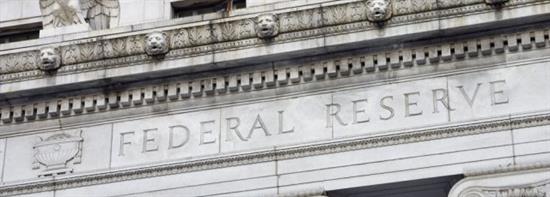Hensarling Remarks on FORM Act
Washington,
November 18, 2015
Tags:
Federal Reserve Reform
Financial Services Committee Chairman Jeb Hensarling (R-TX) delivered the following comments during the House’s debate on legislation to reform the Federal Reserve to make it more transparent and accountable to the American people: I rise in strong support of H.R. 3189, the FORM Act, to reform the Federal Reserve. It is sponsored by the gentleman from Michigan, Mr. Huizenga. To paraphrase an old automobile advertising campaign, “This is not your father’s Fed.” Since the financial crisis, the Federal Reserve has morphed into a government institution whose unconventional activities and vastly expanded powers would hardly be recognized by those who drafted the original act. Regrettably, commensurate transparency and accountability have not followed. Since the financial meltdown of 2008, the Fed has carried out unprecedented rounds of asset purchases known as Quantitative Easing, its balance sheet has swollen to almost $5 trillion -- equal to one-fourth of the U.S. economy -- and almost five times its pre-crisis level. We’ve had almost seven years of near-zero interest rates and the Fed’s so-called “forward guidance” provides almost no guidance to investors on when rates might finally be normalized. This ongoing uncertainty is a significant cause of businesses hoarding cash and postponing capital investments, and community banks conserving capital and reducing lending. Adding to the economic uncertainty is the Dodd-Frank Act granting the Fed sweeping new regulatory powers that directly intervene in the operations of the largest financial institutions. This is totally separate and apart from its monetary policy responsibilities. The Fed now stands at the center of Dodd-Frank’s codification of “too big to fail.” With respect to these firms, the Fed is authorized to impose heightened prudential standards including capital and liquidity requirements, risk management requirements, resolution planning, credit exposure report requirements and concentration limits. The Fed is even authorized to, on a vague finding, that if a financial institution poses a grave threat to financial stability, that they can actually break up the firm. In other words, the Fed can now literally occupy the board rooms of the largest financial institutions in America and influence how they deploy capital. The Fed’s monetary policy must be made clear and credible and its regulatory activities must comport with the rule of law and bear public scrutiny. To accomplish this, the Fed Oversight and Reform and Modernization Act (FORM Act), authored by Congressman Huizenga should be enacted into law. Reform, accountability, and transparency on one hand; and independence and conduct of monetary policy on the other are not mutually exclusive concepts. The main reforms of the FORM Act are as follows. On monetary policy, the Fed must publish and explain with specificity the strategy it is following. The FORM Act allows the Fed to choose any monetary policy, strategy or rule it prefers and it has the power to amend or depart from that rule whenever the Fed decides economic circumstances so warrant. Whether the Fed chooses to conduct monetary policy based upon the Taylor Rule, developed by Stanford economist John Taylor, or whether they choose to conduct monetary policy based on a rousing game of rock, paper, scissors, or any other rule or method, the Fed will retain the unfettered discretion to do so. The FORM Act simply requires the Fed to report and explain its rule and its deviations from a standard benchmark to the rest of us. Economic history clearly shows that when the Fed employs a more predicable rules-based monetary policy, more positive economic results will occur. Some have opined that such a provision will compromise the Fed’s monetary policy independence; it does not. The Fed again will retain unfettered discretion in the exercise of monetary policy. Given that members of the Fed Board of Governors enjoy 14-year terms, second only to lifetime judicial appointments and the Fed’s budget is independent of Congressional appropriations it is almost inconceivable that Congress can impose upon the Fed’s monetary policy independence. On regulatory policy, the FORM Act compels the Fed to conduct cost benefit analysis for all its regulations. This is also known as common sense. Under Dodd-Frank, the Fed is directed to publish upwards of 60 new regulations, some in conjunction with other agencies, where the cost benefit analysis is not required. The Fed’s failure to carry out these studies results in excessive regulatory burdens on our small banks and businesses which harms the economy. Furthermore, under the FORM Act, the fed will be required to issue formal regulations after providing for notice and comment for Dodd-Frank stress tests scenarios and to disclose resubmitted stress tests. The Fed’s authority to stress tests to direct operations of financial institutions it deems systemically important puts government bureaucrats in the position of essentially dictating business models and operational objectives of private businesses. Yet the Fed’s implementation of stress testing is marred by a lack of transparency and a total disregard for the rule of law. Given the secrecy surrounding the stress tests, it is difficult for Congress and the public to assess either the effectiveness of the Fed’s regulatory oversight or the integrity of their findings. Again, under Dodd-Frank, vast powers have been expanded of the Fed. The Fed is not using a transparent monetary policy. So because of this greater transparency, greater accountability is is necessary. Otherwise, we may soon awake to discover our central bankers have morphed into our central planners. |


